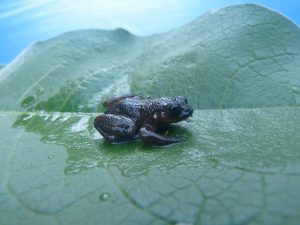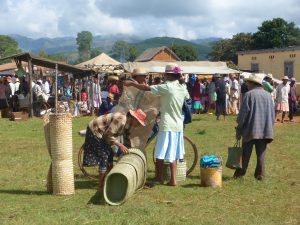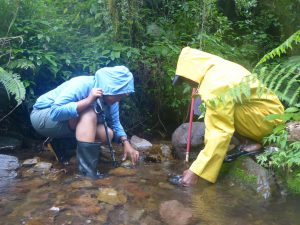My name is Sylviane Rakotozafy and I’m an herpetologist devoting to conserve amphibians and reptiles in Madagascar. Here in this blog, I am going to drive you somewhere in Madagascar. I suppose that everybody knows Madagascar is a country rich in biodiversity with many wonderful species found nowhere else on Earth. But in the centre of Madagascar’s highlands, there is a place called “Ankaratra Massif” where you can find two mysterious species of frogs: Williams’ Bright-eyed Frog (Boophis williamsi) and the Madagascar Frog (Mantidactylus pauliani). They inhabit the moving streams in the top of the mountain, above 2100 m altitude. Hence they are known as “micro-endemic species” because they are only found in Ankaratra Massif and typically high altitude amphibians. The bodies of these high altitude specialist frogs are adapted to extreme condition of this mountain.
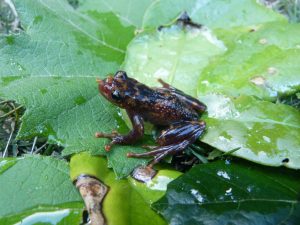
Actually, Ankaratra Massif is an extinct volcanic mountainous region. Not only this, the Massif represents the third highest peak “Tsiafajavona”, but it is also the coldest place in Madagascar. “Tsiafajavona” literally means “where there are always clouds”, and during the winter which is from May to August, the temperatures at the high mountain area are below zero degrees and may drop less than 10°C at night. Therefore, I nicknamed this area “The misty mountain cold forest”. Can you imagine how to survive 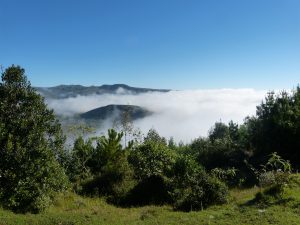
Unfortunately, beside this conspicuous description, those frogs are also classified as Critically Endangered Species. Indeed, Ankaratra original forest is almost destroyed and only a small portion of it remains. The rest is largely featured by man-made forest including pine plantations. Due to the proximity of Ankaratra forest to the urban area, coupled with the acceleration of population growth, Ankaratra is not spared from anthropogenic activities. In Ankaratra, most of local people are mainly farmers and they need more land to cultivate rice, potatoes, beans, maize and peas. They also serve the forest in diverse ways: as important sources of charcoal and construction timber for urban markets, for cash income and to meet subsistence needs. And the only source of potable water and draining channel to irrigate fields is the streams from the mountain.
Logging, charcoal production and agricultural land expansion have led to forest loss. The denudation of areas along the streams, plus heavy cattle grazing as well as charcoal pits cause severe soil erosion, sedimentation and pollution of the breeding streams. Therefore, the remaining populati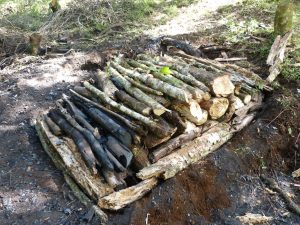
Even though Ankaratra Massif is already a special reserve managed by the local community, the only ongoing method to regularly control and stop illegal activities is forest patrolling through forest guards units.
Thanks to the EDGE Fellowship programme, Segré Foundation, I am able to conduct an applied research and conservation project to my EDGE species and might pull them back from the edge of extinction. The aim of our expedition is to monitor these two critically endangered frogs throughout Ankaratra massif by estimating their population size, population trends across time and space, distribution range, the effect of stream condition (water quality) and riparian habitat on the species and to measure the genetic similarity between fragmented populations.
In addition, I will also conduct a social science to investigate local community’s barriers and interests and to influence their perception towards biodiversity in Ankaratra to get them better act in conservation of the Ankaratra massif. So, to start with, I think the best way to obtain a general understanding of the situation in Ankaratra is to conduct a social interview through a series of predefined questionnaires. I will organize a group meeting in order to directly interact with key actors (representative or leader of each local community).
In Ankaratra, there is a famous market every Tuesday where most of people near and around Ankaratra get together to either sell or buy goods and crops. We took advantage of this opportunity to share and distribute invitation about the group meeting. We also got help from the Mayor of Ankaratra because he kindly offered his help to share the invitation when the date is closed. Well, according to him, and I think he was right, people there are so busy to find their daily needs and might forget the event if we share the invitation earlier.
Want to find out more about saving these species from the edge, stay in touch with our blogs here.
-Sylviane
ZSL’s EDGE of Existence Programme is kindly supported by Fondation Segré, investing in the next generation of conservation leaders.
Related blog posts
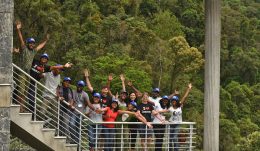
Introducing ZSL’s new Segré EDGE Fellows
ZSL’s EDGE of Existence programme is pleased to announce a new and exciting collaboration with Fondation Segré, which will support fifteen EDGE Fellowships over…
